
The National Aquarium – also known as National Aquarium in Baltimore and formerly known as Baltimore Aquarium – is a non-profit public aquarium located at 501 East Pratt Street on Pier 3 in the Inner Harbor area of downtown Baltimore, Maryland in the United States. Constructed during a period of urban renewal in Baltimore, the aquarium opened on August 8, 1981. The aquarium has an annual attendance of 1.5 million visitors and is the largest tourism attraction in the State of Maryland. The aquarium holds more than 2,200,000 US gallons (8,300,000 L) of water, and has more than 17,000 specimens representing over 750 species. The National Aquarium's mission is to inspire conservation of the world's aquatic treasures. The aquarium's stated vision is to confront pressing issues facing global aquatic habitats through pioneering science, conservation, and educational programming.

Omaha's Henry Doorly Zoo and Aquarium is a zoo in Omaha, Nebraska. It is accredited by the Association of Zoos and Aquariums and a member of the World Association of Zoos and Aquariums. In August 2014, TripAdvisor rated it the "world's best zoo", ahead of the San Diego Zoo and Loro Parque, based on an algorithmic assimilation of millions of reviews for 275 major zoos worldwide.
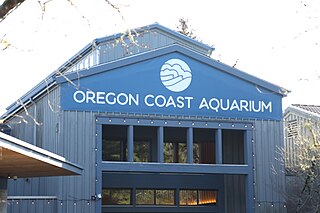
The Oregon Coast Aquarium is an aquarium in Newport in the U.S. state of Oregon. Opened in 1992, the facility sits on 23 acres (9.3 ha) along Yaquina Bay near the Pacific Ocean. The aquarium was home to Keiko, the orca who starred in the movie Free Willy, from January 7, 1996, until September 9, 1998, when he was shipped to Vestmannaeyjar, Iceland. USA Today considers the Oregon Coast Aquarium world-class and Coastal Living magazine ranks it among the top ten aquariums in North America.
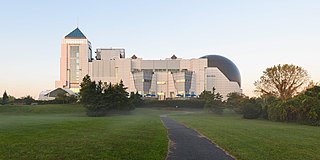
Liberty Science Center is an interactive science museum and learning center located in Liberty State Park in Jersey City, New Jersey, United States. At its opening, it was the largest such planetarium in the Western Hemisphere and the world's fourth largest.
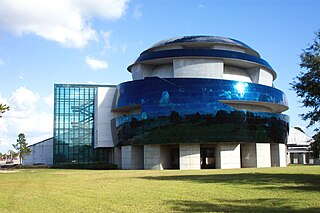
The Museum of Science & Industry (MOSI) is a non-profit science museum located in Tampa, Florida.

The Museum of Science (MoS) is a nature and science museum and indoor zoological establishment located in Science Park, a plot of land in Boston and Cambridge, Massachusetts, spanning the Charles River. Along with over 700 interactive exhibits, the museum features a number of live and interactive presentations throughout the building each day, along with scheduled film showings at the Charles Hayden Planetarium and the Mugar Omni Theater. Additionally, the Museum of Science is an accredited member of the Association of Zoos and Aquariums (AZA), being home to over 100 animals, many of which the museum gained after they were surrendered, confiscated, rescued or rehabilitated.

The Saint Louis Science Center, founded as a planetarium in 1963, is a collection of buildings including a science museum and planetarium in St. Louis, Missouri, on the southeastern corner of Forest Park. With over 750 exhibits in a complex of over 300,000 square feet (28,000 m2), it is among the largest of its type in the United States.

The Manitoba Museum, previously the Manitoba Museum of Man and Nature, is a human and natural history museum in Winnipeg, Manitoba, as well as the province's largest, not-for-profit centre for heritage and science education.

The Denver Museum of Nature & Science is a municipal natural history and science museum in Denver, Colorado. It is a resource for informal science education in the Rocky Mountain region. A variety of exhibitions, programs, and activities help museum visitors learn about the natural history of Colorado, Earth, and the universe. The 716,000-square-foot (66,519 m2) building houses more than one million objects in its collections including natural history and anthropological materials, as well as archival and library resources.
The Fort Worth Zoo is a zoo in Fort Worth, Texas, United States, and is home to 7,000 native and exotic animals. It has been named as a top zoo in the nation by Family Life magazine, the Los Angeles Times and USA Today, as well as one of the top zoos in the South by Southern Living Reader's Choice Awards.
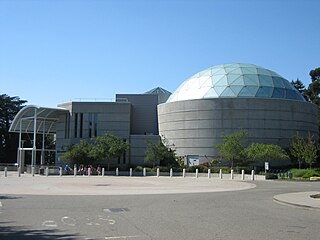
Chabot Space and Science Center, located in Oakland, California, is a center for learning in Earth and space science, which features interactive exhibits, planetariums, a large screen theater, hands-on activities, and three powerful telescopes.

The Toledo Zoo & Aquarium, located in Toledo, Ohio, is a member of the World Association of Zoos and Aquariums (WAZA) and is accredited by the Association of Zoos and Aquariums (AZA), valid through September 2023. The Toledo Zoo & Aquarium houses over 10,000 individual animals from 720 species. The Toledo Zoo & Aquarium currently participates in over 80 species survival programs. It has over 57,000 members and hosts over 1 million visitors a year.

The Phillip and Patricia Frost Museum of Science is a science museum, planetarium, and aquarium located in Miami, Florida, United States. The museum originally opened its Coconut Grove location across from Vizcaya Museum and Gardens in 1960. It relocated to Museum Park in the downtown area adjacent to the Perez Art Museum Miami in 2017 after the closing of the Coconut Grove location in 2015.
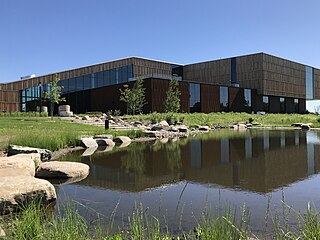
The Bell Museum, formerly known as the James Ford Bell Museum of Natural History, is located at the University of Minnesota's Saint Paul campus. The museum's current location on the Saint Paul campus opened in 2018. The Minnesota wildlife dioramas showcase animal specimens from around the world. The museum also houses the digital Whitney and Elizabeth MacMillan Planetarium. The museum is part of the university's College of Food, Agricultural and Natural Resource Sciences. The museum's former location on University of Minnesota's Minneapolis campus closed in January 2017.

The Museum of Arts and Sciences, often referred to as MOAS, is a museum in Daytona Beach, Florida, United States. MOAS is the primary art, science and history museum in Central Florida. Programs are sponsored in part by the State of Florida, Department of State, Division of Arts & Culture, the Florida Arts Council, the National Endowment for the Arts and the County of Volusia.The museum is a member of the American Alliance of Museums and an affiliate of the Smithsonian Institution. It is home to the Cici and Hyatt Brown Museum of Art which contains the largest collection of Florida art in the world, The Lowell and Nancy Lohman Planetarium, the only planetarium located on the Space Coast, as well as 30,000 artifacts, making it one of the largest museums in central Florida.

The Virginia Aquarium & Marine Science Center, formerly known as the Virginia Marine Science Museum, is an aquarium and marine science museum located in Virginia Beach, Virginia, just south of Rudee Inlet. The exhibits at the museum are contained in over 800,000 US gallons (3,028,000 L) of fresh and saltwater displays.

The Kansas City Museum is located in Kansas City, Missouri, United States. In 1910, the site was built by lumber baron and civic leader Robert A. Long as his private family estate, with the four-story historic Beaux-Arts style mansion named Corinthian Hall. In 1940, the site was donated by Long's heirs to become a public museum. Seventy-five years later, it began extensive renovation.
Kaleideum in Winston-Salem, North Carolina was created from the July 2016 merger of Children's Museum of Winston-Salem and SciWorks, the Science Center and Environmental Park of Forsyth County. Currently, the museum operates two locations — Kaleideum Downtown and Kaleideum North.

The Greater Cleveland Aquarium is an aquarium in Cleveland, Ohio. Occupying the historic FirstEnergy Powerhouse building located on the west bank of the Cuyahoga River in the city's Flats district, the aquarium, which opened in January 2012, consists of approximately 70,000 square feet (6,500 m2) of exhibition space and features 55 exhibits over 9 thematic concentrations representing both local and exotic species of fish. The facility is the only independent, free-standing aquarium in the state of Ohio and ended a 26-year period that the city lacked a public aquarium.

The Stamford Museum & Nature Center, located in Stamford, Connecticut, is an art, history, nature, and agricultural sciences museum. The property covers 118 acres beginning about half a mile north of the Merritt Parkway. It was originally a private estate.




















